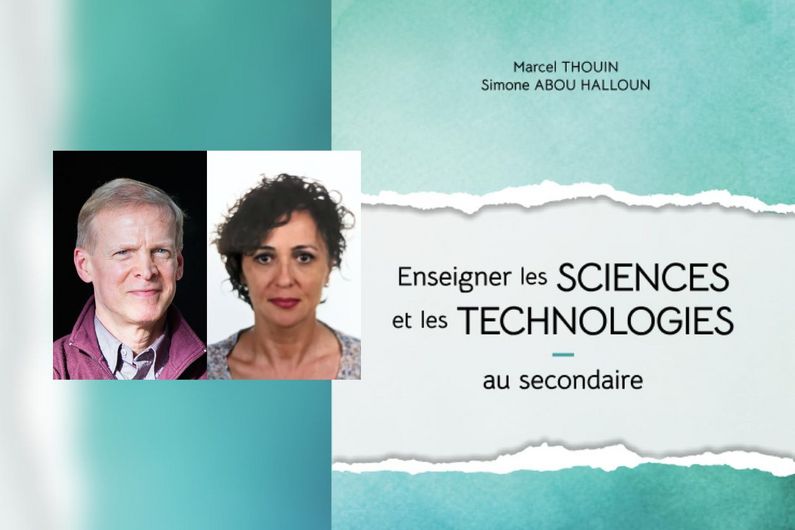Getting teens hooked on science
- UdeMNouvelles
11/02/2023
- Virginie Soffer
Marcel Thouin and Simone Abou Halloun discuss their new French-language book on teaching science and technology in high schools.
Two education experts at Université de Montréal – didactics professor Marcel Thouin and lecturer Simone Abou Halloun – have a new French-language book out on teaching science and technology to high-schoolers.
We caught up with them to learn more about their comprehensive tome, which runs 386 pages, and to find out what motivated them to write it as well as get their views on using digital tools in school.
Why did you write this book?
There are already a few good books on how to teach high-school science and technology, such as those by UQÀM's Patrice Potvin, but none of them goes deep enough into the theoretical and practical aspects to fully equip secondary school teachers for everything their job entails.
Our book defines the field of science and technology and lays out the various characteristics of teaching exercises, theoretical learning and hands-on activities, while also providing examples. It also explains the history of science in high schools, covers the main challenges of teaching these disciplines, and addresses common issues affecting learning, student assessments and teaching materials. Finally, it includes tips on how to run safe laboratory activities. The book even explains what makes for particularly successful science and technology classes.
Why is high-school science and technology important?
Several studies have shown that learning science and technology can spark students' curiosity, lead to more balanced cognitive development (compared with those who don't study these disciplines), enhance general knowledge and help develop critical thinking skills.
Beyond that, studying science and technology is essential now that we're in the Anthropocene Epoch, with climate chaos threatening our way of life. We need to learn how to become environmentally responsible citizens. Sorry, but electric cars won't be enough to turn the tide on climate change!
Unfortunately, most Quebec high-school students stop taking science and technology as soon as it stops being a required subject, which is after Secondary 4 (the equivalent of Grade 10 elsewhere in Canada). It's a shame because dropping the subject means students are closing the door on a wide range of educational opportunities, including vocational, CEGEP and university programs that lead to interesting, well-paid careers.
Can you explain what science and technology didactics is all about?
In a nutshell, didactics encompasses both the art and science of teaching a specific discipline, as well as how that subject is learned.
In the case of science and technology, we know that students come to class with all sorts of naïve and unscientific misconceptions, such as "light objects float and heavy objects sink," or "the Sun revolves around the Earth," or "whales are fish." Didactics in this field can be defined as a branch of educational science dedicated to planning activities that introduce students to concepts, demonstrate how they work and encourage successive questioning.
Fundamentally, science and technology didactics involves reviewing what needs to be taught, organizing activities and continually making sure that students are accurately grasping the concepts. It's very important that students realize that scientific knowledge isn't mere opinion, but the result of centuries of observation, experimentation, questioning, trial and error, because all this is the basis of scientific and technological work.
How are digital tools used in the teaching of science and technology education today?
Generally speaking, we believe that youth spend far too much time in front of screens, whether it's on their phones, tablets, computers or TVs. We should aim to cut screen time rather than increase it, particularly in disciplines where screens haven't proved valuable.
However, digital tools can occasionally be useful in science and technology. Students can use them to conduct experiments or build prototypes virtually, when working with real equipment would be too expensive, too dangerous or hard to access. For example, some virtual labs let you fire projectiles so that you can safely study their trajectory or combine various compounds to see how they react without exposing yourself to big explosions or toxic fumes. In real-world labs, digital technology can be used to measure variables in real time and instantly generate data tables and graphs.
About this book
Enseigner les sciences et les technologies au secondaire, by Marcel Thouin and Simone Abou Halloun, was published in August 2023 by JFD Éditions.













